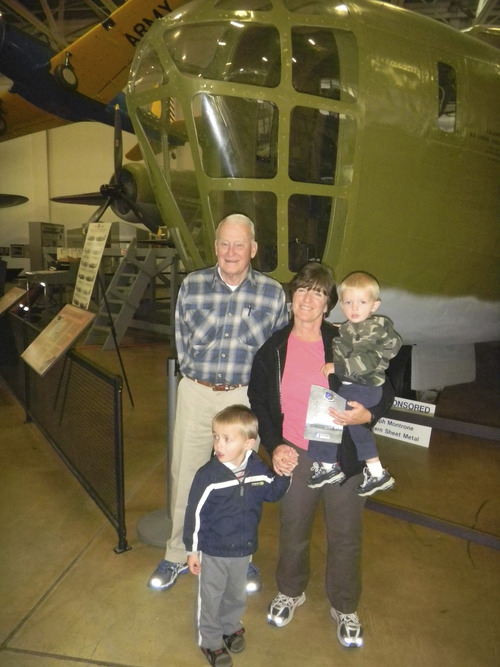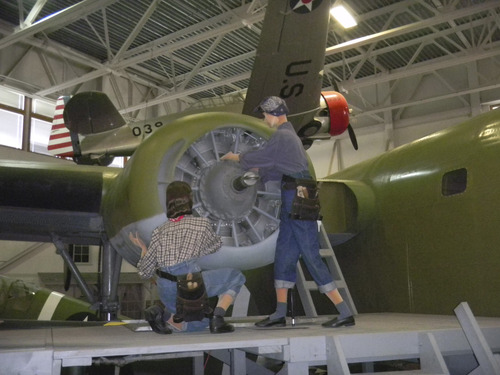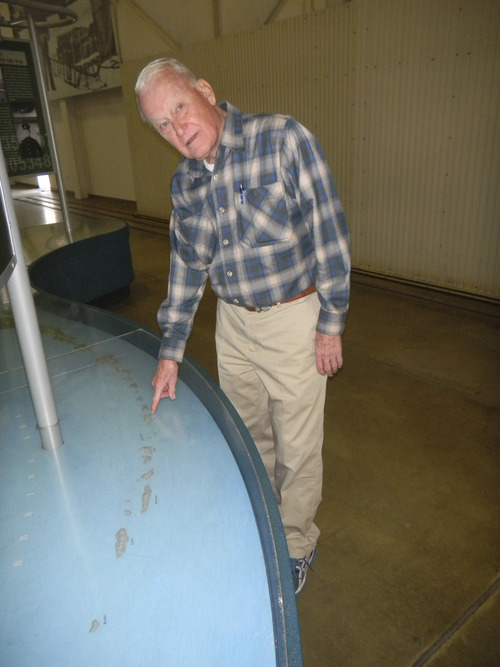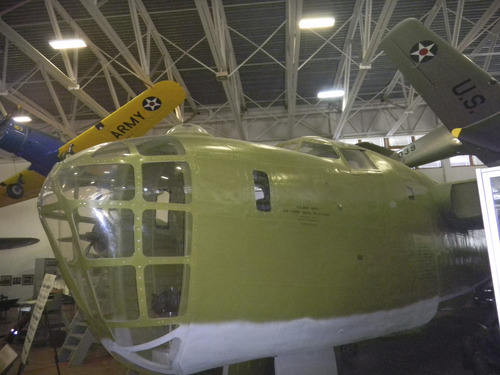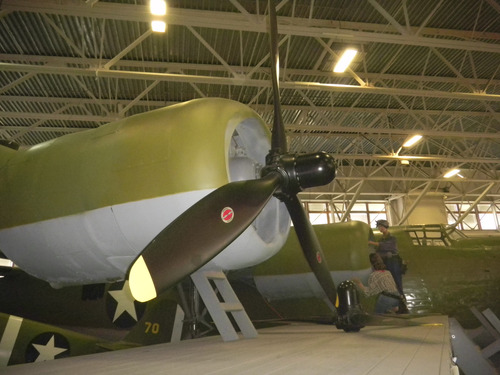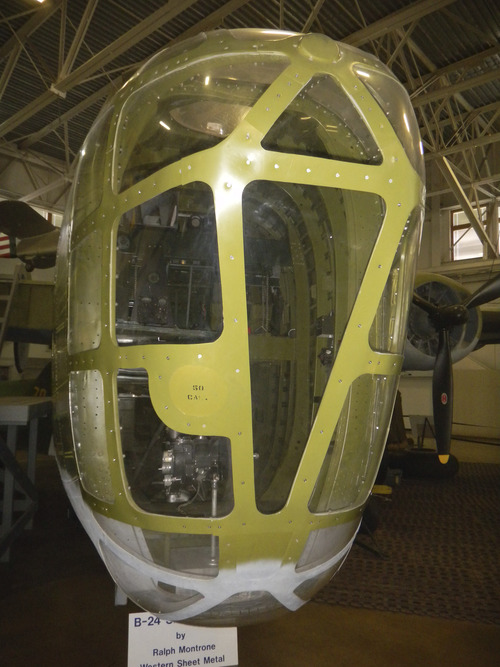This is an archived article that was published on sltrib.com in 2012, and information in the article may be outdated. It is provided only for personal research purposes and may not be reprinted.
Roy • As former Hill Air Force Base commander and retired Lt. Gen. Marc Reynolds graciously explained how he was part of a crew that recovered the rare B-24 Liberator bomber on Alaska's Great Sitka Island that is now on display at the base's fine aerospace museum, MaryAnn Strong approached.
The Salt Lake City resident, with grandchildren Mason and Morgan Stevens in tow, told Reynolds that her father, Robert Matheson, was a navigator on the B-24 during World War II. Germans shot down the bomber and her dad spent 14 months in a prison camp.
"I thought it is important [to see the plane]," Strong explained. "This was part of our heritage…In our family, it matters a lot."
She asked Reynolds where the navigator sat. He took down a barrier and allowed us to crawl under the belly of the big plane to look inside, showing Strong where her father would have worked, right behind the pilot.
I came to see the plane after reading author Laura Hillenbrand's best-selling book "Unbroken: A World War II Story of Survival, Resilence and Redemption." The book chronicles the amazing true story of Louis Zamperini, who represented the United States as a distance runner in the 1936 Berlin Olympics.
During World War II, Zamperini served as the bombardier on the relatively new B-24, a difficult-to-fly plane with nicknames such as "The Flying Brick," "The Constipated Lumberer" and "The Flying Coffin."
"Flying it was like wrestling a bear," wrote Hillenbrand.
The planes came on line in December of 1939 and, with 19,286 constructed, were the most-produced heavy Allied bomber of World War II. Hill Field workers started Utah's first progressive assembly line for the B-24 on Feb. 14, 1943.
Zamperini was on a rescue flight in the South Pacific when the B-24 called the Green Hornet he was in crash-landed into the ocean. He barely survived the crash and was able to salvage two rescue rafts. He and the plane's captain lived 47 days on the ocean where they nearly starved, died of thirst, were attacked by sharks and were shot at by a Japanese plane.
After drifting for more than 2,000 miles, they were captured by the Japanese and spent the remainder of the war in concentration camps, barely surviving.
I wanted to see the plane for myself. Calling Hill Field, I found that the museum has restored one of what is believed to be only 20 surviving planes.
Volunteer Kay Stowell showed me the Plexiglass B-24 nose where Zamperini would have used his Norden bombsights and where the pilots would have sat.
"They could fly higher and carry heavier loads than the B-17, but were not as tough as the B-17," Stowell told me about the B-24, pointing to the nearby B-17 inside the museum's large hangar.
As I examined and photographed the plane, Stowell returned and said that Reynolds, who now heads up a volunteer program that restores planes and raises funds for the museum, was in his office. The general kindly told me the history of the plane now in the museum.
He said that on Jan. 18, 1943, the plane flown by Capt. Ernest "Pappy" Pruett crash-landed on Great Sitka Island in bad weather. The plane was largely forgotten on the uninhabited island for the next 50 years until it was located by a search party. The Aerospace Heritage Foundation of Utah retrieved it in 1995 and returned it to a restoration facility in California. Pruett joined the general as part of the group that helped to disassemble the plane.
"There was a lot of hard, tough walking," said Reynolds, who regularly talks with guests about this and other planes in the large museum.
Work on the fuselage was completed in 2002 while the wing came to Hill in November of 2006. The plane was mostly completed in December of 2006, but workers are still restoring parts of it, including the gun turret.
Now part of the museum's exhibit, Hill's B-24 Liberator gives family members such as Strong a chance to see the plane fathers and grandfathers flew and to honor their memory.
Twitter @tribtomwharton


